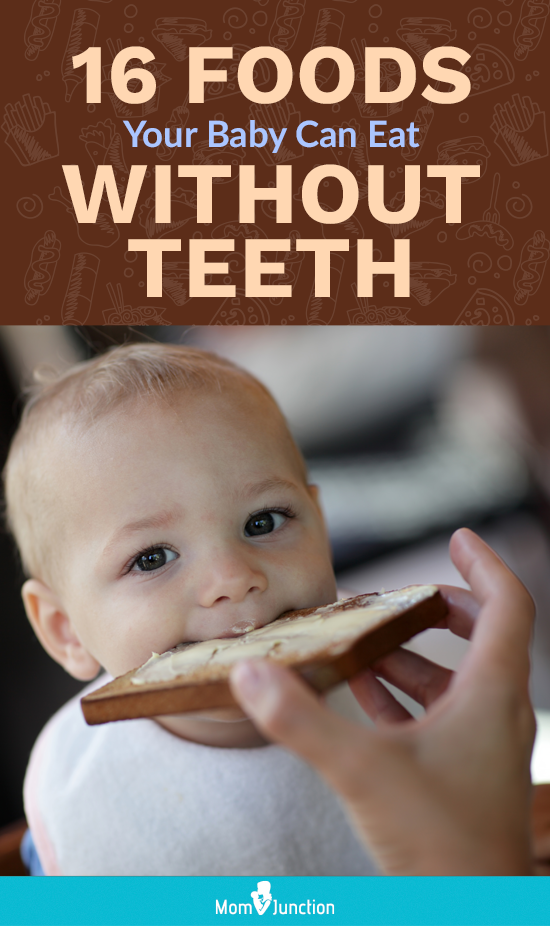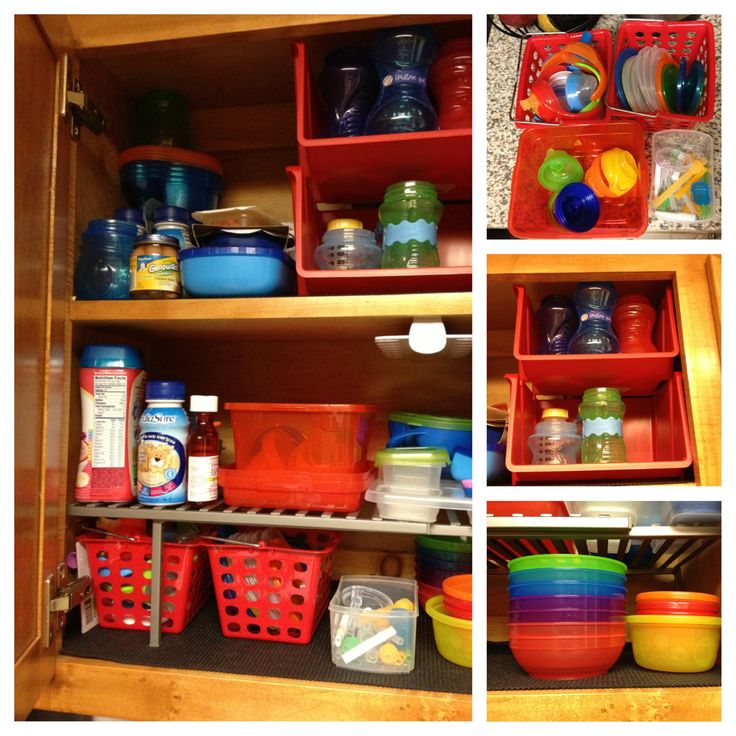Baby food with spices
Adding Spices and Herbs to Baby Food
All Posts, by Date » Learn » Adding Spices and Herbs to Baby Food
Baby food doesn’t have to be bland, liven up your babies’ food and expand their palates by experimenting with a range of spices and herbs. Increasing babies’ taste buds in this way helps to cultivate adventurous and healthy little foodies.
Herbs and spices provide our foods with a multitude of flavours, fragrances, and colours. However, many parents worry about adding flavour this way to their babies’ food, believing that spices are hot and not suitable for little ones’ taste buds.
There is a big difference, however, between hot spices and aromatic ones. Aromatic spices, along with a range of different herbs, are perfect for adding to baby food.
This guide explains when to start adding spices and herbs, the benefits of adding them and gives some ideas on how to start introducing them to your baby.
I always encourage parents who are just starting weaning their babies, either by purees or baby-led, to experiment with herbs and spices from the beginning. As salt and sugar should be avoided before one, adding a little spice and/or herbs is a great way to add flavour to baby food.
Breastfed babies are often introduced to a variety of spices even before starting solids. Breast milk can change its flavour, depending on a mum’s diet. If Mum enjoys spicy and flavoursome food, then her baby will be exposed to this through her milk, helping create and develop a taste for flavoured foods.
Benefits of Introducing Spices and Herbs at an Early Age- As salt should be limited in baby food, spices and herbs are a good way to flavour food.
- Allows babies to get used to a range of flavours at a time when they are willing to experiment with taste.
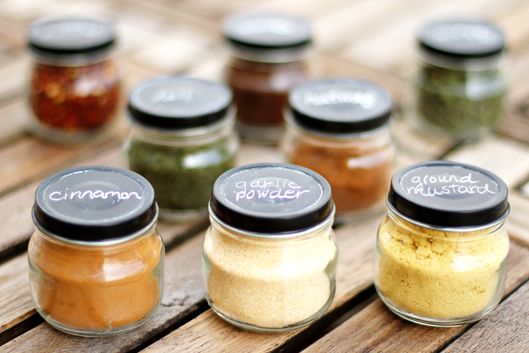
- Teaches babies to expect change with food.
- Helps babies transition to family food, as your baby will be familiar with those tastes and more likely to accept them.
- Provide certain health benefits. Read more here!
Begin with herbs and aromatic spices like cinnamon, turmeric, nutmeg, cardamom, cumin, coriander, clove, smoked paprika, mint, basil, dill and rosemary.
This is just a few ways to get you started spicing up your baby’s food…
CINNAMON – Cinnamon has warm, sweet and spicy notes and adds delicious flavour to sweet and savoury meals. Try adding it to apple puree, banana, sweet potato puree, fruit compote & yoghurt, muffins, porridge and stews.
SMOKED PAPRIKA – One of our favourites! Smoked paprika has a sweet rich smokey taste. Try adding to sweet potato, carrots, chicken, fish, lentils, paella, chilli and eggs.
CARDAMOM – Green cardamom (our preferred choice) has a floral, minty, peppery taste and works well in both sweet and savoury dishes. Try adding it to pear puree, carrot puree, chicken, porridge, muffins, banana bread,
TURMERIC – Turmeric has a mild fragrance and warm slightly bitter notes. Try adding to lentils, eggs, porridge, cauliflower puree, curries and stews.
CUMIN – Cumin has a nutty, peppery, earthy flavour that pairs well with meats and vegetables. Try adding it to carrot puree, cauliflower puree, lamb, chicken, stews, curry and chilli.
NUTMEG – Nutmeg has a warming sweet and peppery flavour. It is lovely in sweet baking but also with creamy savoury dishes. Try adding it to muffins, stewed fruit, bechamel sauce and pasta bakes.
MINT – Mint is aromatic and fresh with a sweet cooling flavour. Great for adding to both sweet and savour purees, combines well with many vegetables such as new potatoes, tomatoes, carrots and peas and adds fresh flavour to fruits.
Great for adding to both sweet and savour purees, combines well with many vegetables such as new potatoes, tomatoes, carrots and peas and adds fresh flavour to fruits.
OREGANO – Oregano is very aromatic with slight earthy, green bitter notes, it is very popular in Mediterranean cooking. Try adding it to veggie purees, roasted vegetables, eggs, pasta sauces, or pizza.
ROSEMARY – Rosemary has a piney aroma and a distinctive sharp flavour. It is very strong and you only need a little. It gives a lovely flavour to purees, savoury dishes and even sweet baked goods. I love how it has been used in this roasted banana and rosemary puree.
BASIL – Basil has a light herbal bouquet that complements a wide variety of foods. Try it in baby purees, or puree it on its own for a fragrant, healthy sauce perfect for you and baby. It’s one of the primary ingredients in pesto – so why not try our Homemade Basil Pesto recipe for a delicious finger food dip for your little one
Tips for Using Spices and Herbs- Take Care of Your Spices – Store spices in airtight containers away from light and heat.
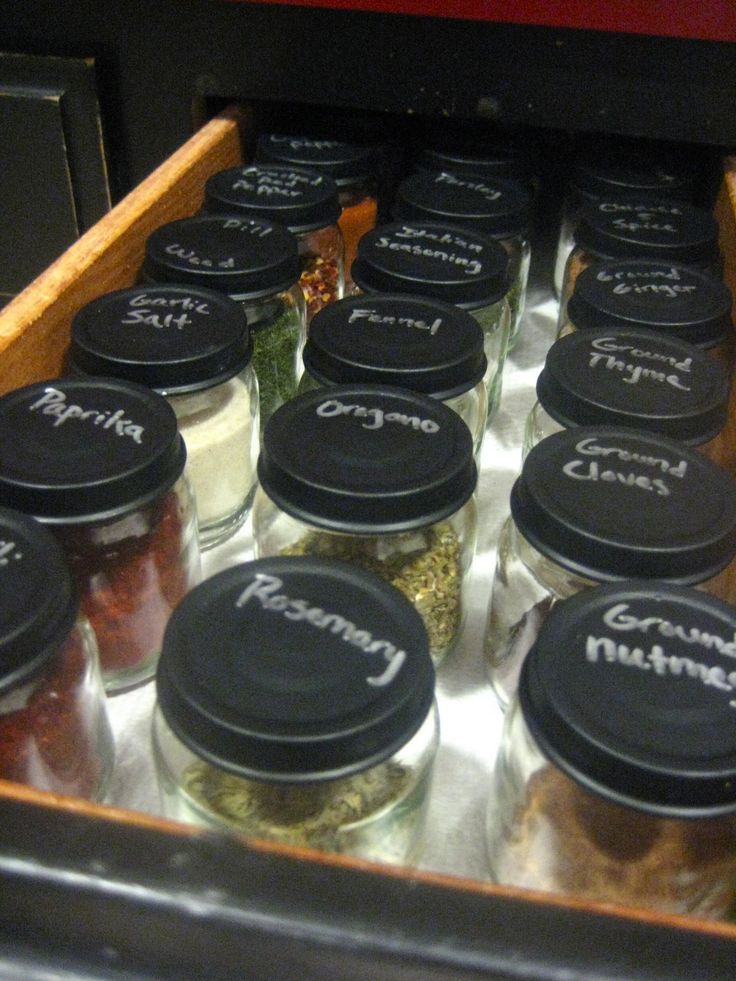 Whole spices will keep for around 1-2 years but after around six months, ground spices will start to lose their aroma and flavour. So buy in small amounts and use often!
Whole spices will keep for around 1-2 years but after around six months, ground spices will start to lose their aroma and flavour. So buy in small amounts and use often! - Dried herbs should also be stored in airtight containers in a cool, dark, and dry space.
- Spice Blends – Always read the packaging when using spice blends (as they often have added sugar and salt), try making your own blends.
- Start with small amounts – Use small amounts to start with to allow your baby to get used to different flavours. You don’t want to overpower the food. Start out by adding just a pinch.
- Prepare fresh leafy herbs properly – Wash fresh herbs and then puree or finely mince before adding to baby food.
- Don’t give up – if your baby rejects the flavour of the spices/herbs just remember that it can take up to 10-20 exposures for a new flavour to be accepted.
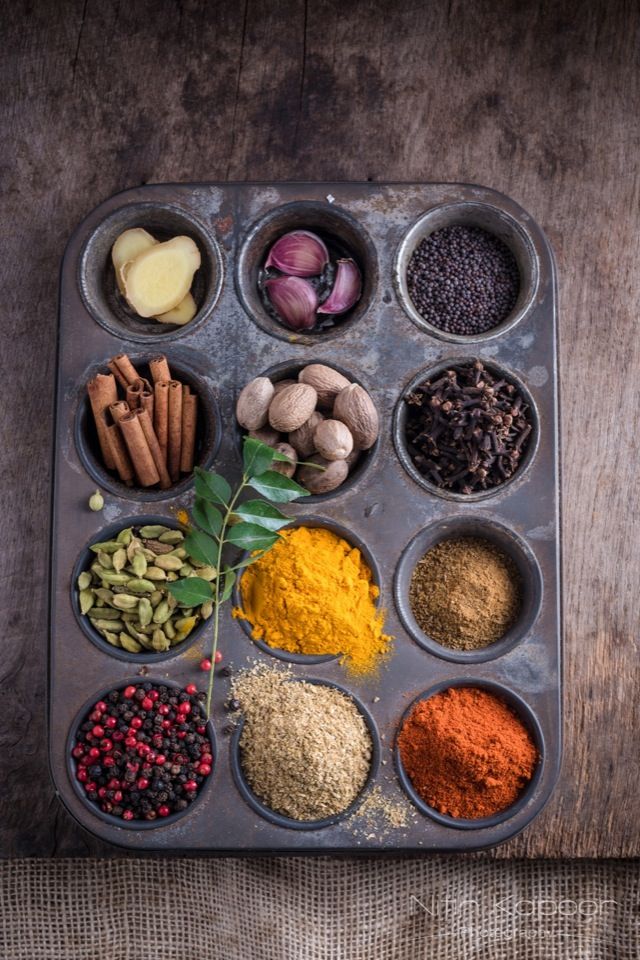
Recipes to Try
Spiced Meatballs
Lamb mince, spices & spinach are mixed together and then formed into balls to make theses deliciously spiced meatballs.
Check out this recipe
Cinnamon Apples
Apple wedges pan-fried in a little coconut oil and a good shake of cinnamon.
Check out this recipe
Sweet Potato Chickpea Curry
A deliciously spiced vegetarian curry, ideal for kids. The sweet potato adds a delicious sweetness that complements the spices perfectly.
Check out this recipe
Meet Amy
Amy Whiteford runs the blog Healthy Little Foodies. She is a mum to two, has a BSc (Hons) Food Science, PGDE Primary Education and a Certificate in Childhood Nutrition. She uses her experience and knowledge to create healthy and delicious recipes for kids. Explore the site for creative ideas, tips, and inspiration! Read more
Explore the site for creative ideas, tips, and inspiration! Read more
How to raise a Healthy Little Foodie
Receive family friendly recipes, delivered weekly to your inbox, for FREE! And receive this FREE ebook - "How to Raise a Healthy Little Foodie"
Reader Interactions
Herbs and Spices for Baby Food
By Min On , Updated
This post may contain affiliate links. Please see our disclosure policy for more details.
Share or Save It for Later!
One easy way to get your baby to eat a variety of foods from early on is to add spices and herbs! So say no to bland baby foods and start experimenting with the many ways you can use your spice pantry to add flavor and variety!
By doing so, it's going to help develop and expand your baby’s flavor preferences and to make the transition to family foods that much easier!
When to Introduce Herbs and Spices to Baby
Short answer - from the beginning.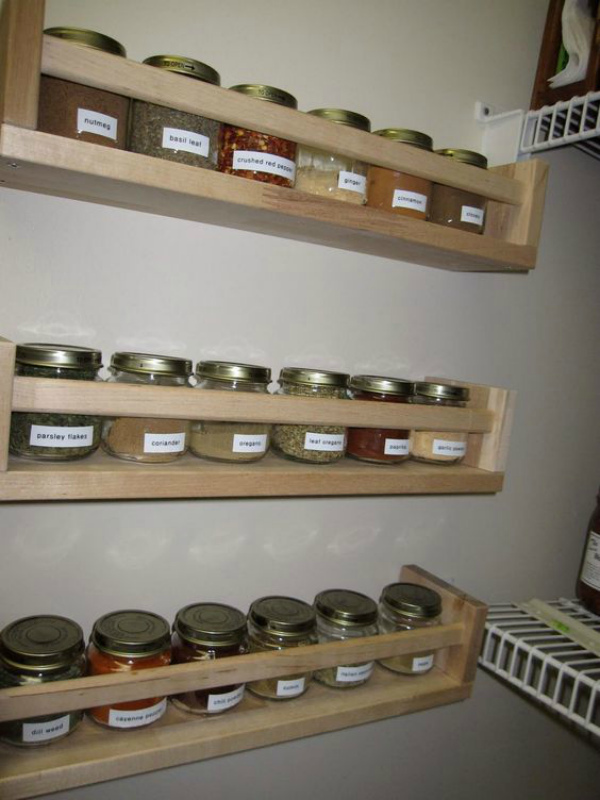
Myth: You must start with bland rice cereals or other foods.
Fact: This recommendation is not based on research. Did you know that babies have more tastebuds than us? They want flavor just like us!
According to research that studied how babies respond to different concentrations of garlic in their mother’s breastmilk, it was found that babies stayed attached to the breast for longer periods of time and sucked more with higher amounts! Fascinating, right?
So remember, when someone tells you that your baby can’t handle flavored foods, they’ve already been introduced to them in the womb through the amniotic fluid and breastmilk.
This is why what mothers eat during pregnancy will not only nourish their babies in the womb but may shape food preferences later in life.
To go from flavorful breastmilk to bland baby food is a step in the wrong direction.
So don’t be afraid to liven up your baby’s food with herbs and spices from the beginning. Fresh or dried, they're such a great, simple way to add flavor without the use of sugar and salt, which you should stay away from.
Fresh or dried, they're such a great, simple way to add flavor without the use of sugar and salt, which you should stay away from.
Is your baby 6 months old and up?
Learn all the secrets to starting solids safely while optimizing nutrition!
I NEED IT NOW!
Benefits
- Increases acceptance of a wider variety of foods during this critical window of opportunity when they’re most willing to try new foods. In other words, it may help minimize picky eating as they grow.
- Makes the transition to family foods easier, which means simpler and more enjoyable mealtimes. Continuous exposure leads to familiarity which leads to acceptance
- Health benefits - herbs and spices are full of antioxidants, have anti-inflammatory and immune-boosting properties, and much more!
Tips for adding herbs and spices
- Keep it simple at first. Start with 1 seasoning added in small amounts to not overpower the food.
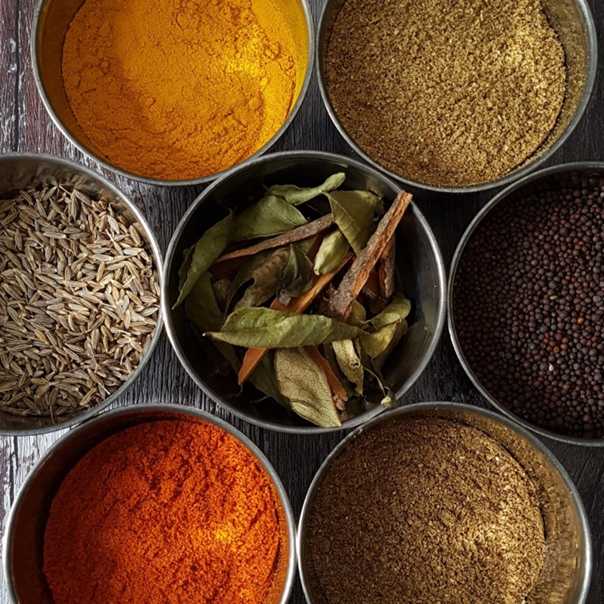
- Fresh herbs: wash and mince or finely chop before adding to foods.
- Dried herbs: start building your spice pantry if you don’t already have one. Once you have a well-stocked assortment of flavorings, the world truly is your oyster! You’ll be able to whip up flavorful dishes in no time.
- storage: keep them in a cool, dry place away from light. This is because moisture, heat, and direct light can diminish the flavor of the spices.
- shelf life: they don’t technically expire but will start to lose flavor over time. In general, when stored properly, they can last for a year. Do check for discoloration and lack of scent.
- Some spices and most blends have added salt so be sure to read the ingredients.
- There’s no need to avoid spicy seasonings. But do stick with the mild to moderate spice levels and again, start small. Of course, if your baby shows any kind of reaction or intolerance, you should avoid.
- Just because you don’t care for certain flavors, don’t assume your baby won’t either.
 Perhaps in trying to expand your baby’s palate, yours may as well!
Perhaps in trying to expand your baby’s palate, yours may as well! - Have fun together trying out different flavor combinations!
- Expect your baby to make faces. This doesn’t mean they don’t like it. Rather they’re becoming accustomed to the taste. So keep offering!
- Keep experimenting! You’ll soon develop your flavor intuition and know just how to “season to taste” or adjust a dish that doesn’t sing to you.
Suggested Vegetable and Spice Pairings
Introduce your baby to diverse and rich tastes from early on! By doing so, you're helping your baby to establish healthy eating habits that will continue well beyond childhood!
Suggested Protein and Spice Pairings
Additional Resources
Here are 3 different ways to cook vegetables for babies and toddlers - steaming, roasting, steam roasting.
Here are some easy ways to add vegetables to your baby's meals
Introduce beef to your baby safe and flavorful ways!
Sign up for my FREE 5-day email challenge and you'll also receive a super handy Vegetable and Spice Pairing chart!
Share or Save It for Later!
Share: [addtoany]
About Min
Thank you so much for stopping by! I am Min, a Registered Dietitian, a Christ follower, a wife, and a mom to our two miracle babies! Currently, I’m having a ton of fun feeding their tummies and sharing our baby led weaning journey! Follow me on Instagram if interested in seeing daily menu as well as tips and tricks.
Reader Interactions
Spices and baby food. What spices can be given to children.
Although spicy and spicy foods are not recommended for preschoolers, spices are sometimes used in children's food. Some manufacturers of baby food add individual spices even to food for children under one year old (mild white pepper, basil, barberry). An absolute ban remains only on hot spices: black and red pepper and mustard are not used in baby food. Other spices can even have a positive effect - they excite the appetite, diversify the taste. A very small amount of this or that seasoning should be added to food.
Some spices that are recommended to add to dishes for children are listed below
Basil, an annual aromatic plant with the smell of lemon, cloves, mint, pepper, gives a wonderful aroma to meat or vegetable dishes. Basil is a great addition to pasta (various spaghetti and pasta sauces are made from it).
Everyone knows “barberry” lollipops, named after one of their constituents - barberry - red berries of the barberry bush, sour in taste. Barberry is used for cooking jam and jam, for pickling fruits, vegetables and meat, served with fried meat, poultry, and game.
Widely used in baby food is such a pleasant and beloved by children spice as vanilla - the unripe fruit of one of the orchid species. Vanilla is used in the confectionery industry, and also serves as an excellent addition to the curd mass, pancake dough, and dairy products. Vanillin is added to fermented milk drinks, puddings, ice cream and sweets.
When preparing confectionery, biscuits, as well as compote or a drink for children, you can use cloves, an aromatic spice from unblown flowers of a tropical clove tree. It is especially recommended to add cloves to various gingerbread.
Ginger is well known from early childhood for the smell of gingerbread and gingerbread. Soft drinks are also prepared with ginger - for example, ginger lemonade has a peculiar taste.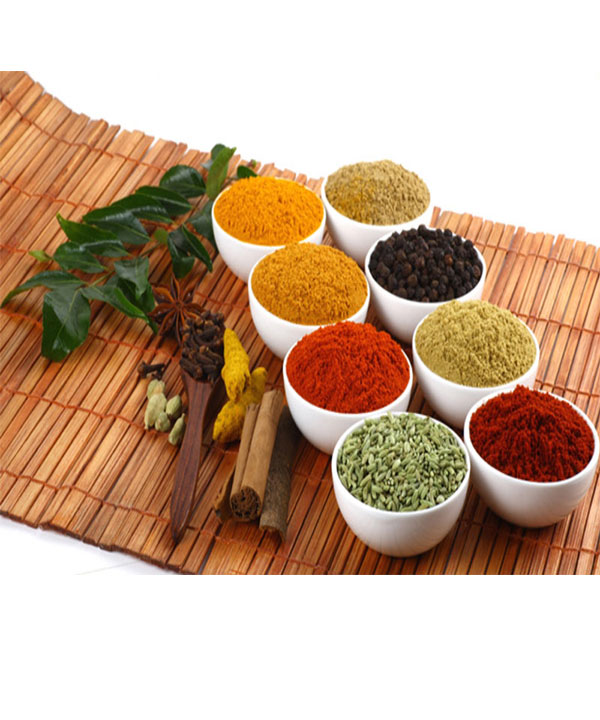
Cinnamon is well-deservedly popular. Children also eat dishes with cinnamon willingly. Cinnamon is added to confectionery products (biscuit with cinnamon), it also goes well with apples.
Turmeric (or turmeric) will add a beautiful yellow color and a peculiar, not too spicy taste to the dish. It is used as a seasoning for meat, rice, vegetables, and diluted with water in a small amount will give a bright color to mashed potatoes, pasta or cottage cheese (this can be used to decorate dishes). Bay leaf can also be used in baby food. It has a pleasant smell, improves the taste of soups, broths, second courses, marinades.
Citric acid is also widely used in cooking - a white crystalline powder prepared from lemon juice. However, for baby food, commercially prepared citric acid is not very desirable, and, if possible, it is better to replace it with fresh lemon juice.
Olives are the mature fruit of the olive tree. They are pickled and used as a side dish or to decorate sandwiches and salads. The specific taste of olives is usually not liked by children. Olives are very high in calories and have many beneficial properties. It is better not to give spicy olives to children, but not very spicy olives can sometimes be offered in a salad or with a dish of meat or vegetables.
The specific taste of olives is usually not liked by children. Olives are very high in calories and have many beneficial properties. It is better not to give spicy olives to children, but not very spicy olives can sometimes be offered in a salad or with a dish of meat or vegetables.
Tropical nutmegs have a pungent taste. Nutmeg is used as a spice in the preparation of meat, fish, rice and other dishes.
Mint, an aromatic plant, grows in our gardens and orchards. Children are happy to eat mint gingerbread, sweets. Mint has a pleasant smell and refreshing taste. It is brewed as a tea, used for colds
. Cumin, a biennial herbaceous plant with a special aroma, can also be used in baby food in small quantities. It can be added to dishes as a seasoning or when baking in cookies, bread.
Dill and parsley are widely used to season dishes to enrich them with vitamins. These seasonings are highly desirable in baby food both raw and dried.
More about adding spices and herbs to complementary foods - Encyclopedia Baby food
Levchuk Victoria©Levchuk Victoria©
a wider range of ingredients than those found in ready-made baby food.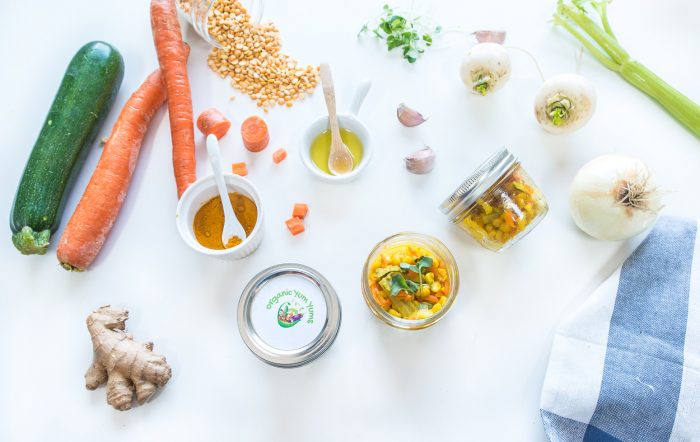
Most conventional brands of ready-to-eat baby foods do not include herbs and spices that will enrich your baby's taste. That's why it's so easy to take advantage of the versatility of homemade baby food and use spices and herbs to spice up and add color to baby's food. This is a wonderful way to help expand your baby's taste buds and introduce them to family nutrition.
In many countries, the first food for babies is not rice porridge, but rather spices, and then everything else. In India, for example, children can safely add a little curry to complementary foods at a very early age. Thai families often use coconut milk, lemongrass, tamarind and even chili when feeding their children. Hispanic babies taste wonderful herbs and spices like cumin, cilantro and even chili!
Contents:
Most pediatricians will recommend waiting until an infant is 8 months old or older to introduce spices and herbs into their diet. This recommendation serves to prevent digestive disorders than is associated with possible allergic reactions.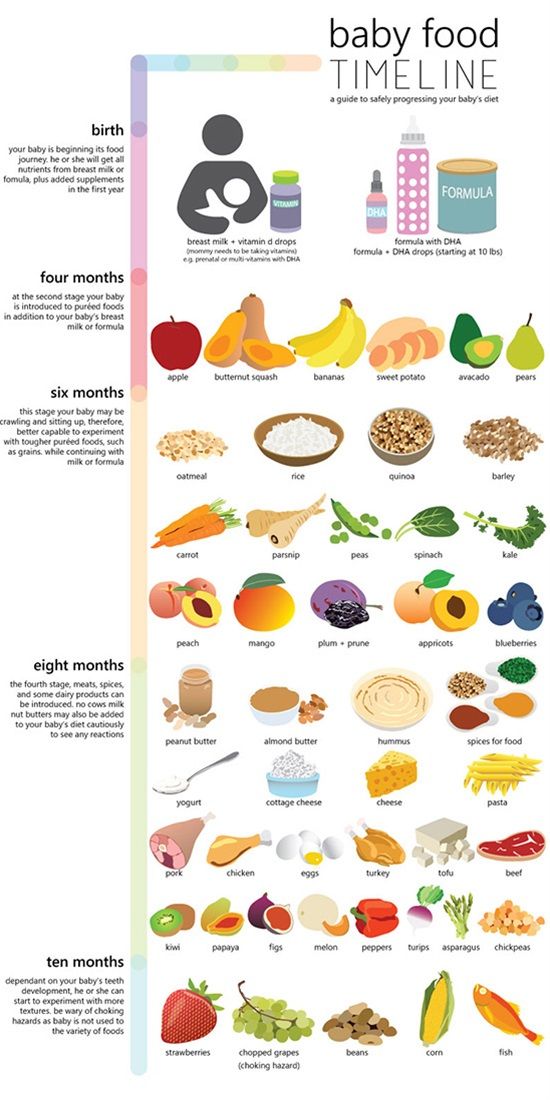
If the child tolerates food well and does not experience any digestive disorders, then you can try to go straight to the spices! As with any new food, the 5-7 day wait rule should be followed when introducing spices and herbs. Also, as always, discuss the introduction and use of herbs and spices with your child's pediatrician.
It should not be forgotten that if a child is breastfed, then he has already tried herbs and spices, as they are passed through breast milk, helping to create and develop the taste of the child.
What types of spices and herbs can be added to baby food?
Often when we think of adding spices to our meals, we think of sugar, salt and pepper. Why do we rarely think about adding herbs and spices?
Fresh or dried herbs and spices that are used for family meals can be added to baby's complementary foods. Using spices and herbs in your baby's diet is a great way to offer them interesting flavors without the use of sugar or salt.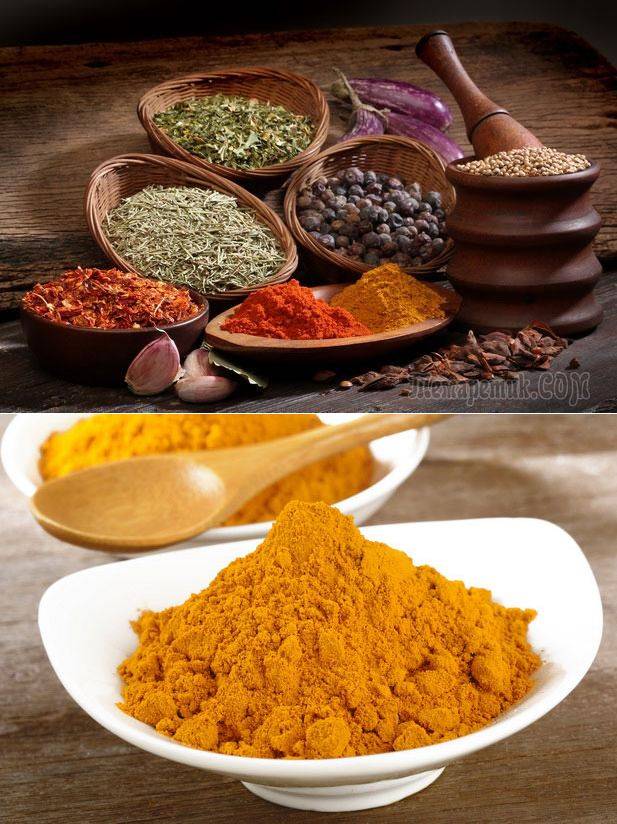 Here are some herbs and spices to try:
Here are some herbs and spices to try:
It should be borne in mind that if one or another spice or herb is not used in the family, then you should not introduce it so early into the baby’s diet, just for a change in diet, you can introduce it later, and at this stage introduce fruits familiar to the whole family , vegetables, meat or dairy products. We choose high quality spices and herbs. And finally, spices and herbs are quite a small amount in a dish, remember the simple rule, less is better than more. You should not greatly enrich the dish with a new taste, just light notes of sweetness or spice are enough. The child has a completely different perception of taste.
A few examples where spices and herbs can be used
You can try using spice mixtures in everyday products such as:
Fruit:
Apple (mashed) vanilla, ginger
Pears : use of ginger, cinnamon, vanilla or even mint
Bananas : use of cinnamon, ginger, allspice, vanilla
Dairy products:
Yogurt : Use with mint, cinnamon, nutmeg, vanilla, ginger, cloves, cardamomon
Vegetables:
Potatoes : use with nutmeg and / or / or / or / or / or / or / or / or / or / or / or cardamom
Pumpkin : use with cinnamon, nutmeg, allspice, ginger and vanilla
Carrot : use with basil and garlic - roasted carrots with cinnamon are delicious too.
Green beans: Use garlic
Pucker Pyre: Use with dill or garlic
cereals:
Macarone: Use oregano, garlic, basil
OVSHI : use fruit, cinnamon and nutmeg, vanilla
Rice: use with cinnamon, nutmeg, vanilla, cardamom, ginger
Quinoa (sweet): use with cinnamon, nutmeg, vanilla, cardamom, sweet ginger
Quinoa (dessert): use with garlic, pepper, onion, basil, oregano, etc.
meat: 9000 with sage, rosemary and thyme
beef:
- with garlic and pepper
- with onions and pepper
- with orange zest
9003 6.
This seasoning mix should be used to flavor chicken, turkey, duck. Can also be used with any poultry stuffing. If there is no access to fresh herbs, you can replace 1 teaspoon of dried herbs with 1 tablespoon of fresh herbs.
Sweet spice blend
The blend is perfect for making apples and pumpkin pies and as a topping for eggnog.
We are not afraid and add me to VK and Odnoklassniki, Instagram!
Like this article? Subscribe to site updates
"Encyclopedia Baby Food"!
Don't forget to bookmark us! (CTRL+SHIFT+D) Subscribe to the site, comment, share in social networks.
On our website Encyclopedia Baby Food there is useful information on the nutrition of your children, which is useful for everyone, and we update the website "Encyclopedia Baby Food" constantly and try to search and write only excellent, verified and necessary information for you and your children.
Disclaimer No. 1: It must be understood that the author of the articles on the Baby Food Encyclopedia website is not a medical staff, “I am not a doctor.” The information I share is based on my own experience. My goal is not to teach you how to eat or feed your child, but to talk about how we did it, what new things I learned or read. This expands the picture of Baby Food knowledge, gives you a glimpse of the whole process so you can decide if you like it or not.
My goal is not to teach you how to eat or feed your child, but to talk about how we did it, what new things I learned or read. This expands the picture of Baby Food knowledge, gives you a glimpse of the whole process so you can decide if you like it or not.
Disclaimer No. 2 : However, the above does not replace visiting a pediatrician. Before you start complementary foods, you need to get his professional opinion on the best way to introduce new foods for your baby. I also draw your attention to the fact that you need to look at the original date of the published articles, because some of the "best practices" may have changed. Always check with your child's pediatrician about complementary foods and their health.
Disclaimer #3: Keep in mind that every family is unique, every situation is also completely unique. There are no universal solutions. Only you can find what works best for you. Certain goals require certain sacrifices and priorities - not everyone wants to make those choices, and that's GREAT! Just know what you want to achieve, and be ready to get to work, putting the best of your strength!
Disclaimer No.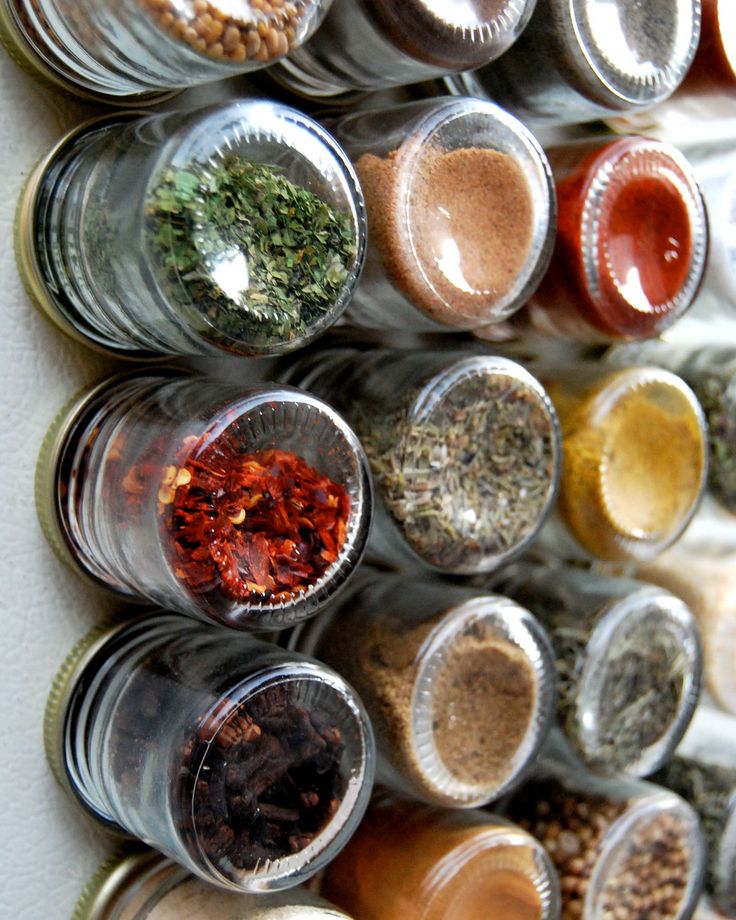 4: The Encyclopedia Baby Food website uses photos from books on baby food with attribution, for a more complete understanding of the information (Article 1274, paragraph 1, part four of the Civil Code of the Russian Federation). Literature on baby food is found in the public domain on the Internet.
4: The Encyclopedia Baby Food website uses photos from books on baby food with attribution, for a more complete understanding of the information (Article 1274, paragraph 1, part four of the Civil Code of the Russian Federation). Literature on baby food is found in the public domain on the Internet.
Apricot puree with chicken
Banan-global puree
Banana puree
borsch
Bousse broth with peas and rice
Boturbrod with kolrabi
Quick dessert from the finished dough
Spring cage Buckwheat porridge with apricots
Buckwheat porridge with banana
Buckwheat pilaf
Children's sausage
Children's milk porridge with banana
Children's vinaigrette
Children's ketchup
Children's cucumber salad
Children's Olivier salad
Children's porridge biscuits
Children's puree of strawberries, bananas, yellow cherries, yoghurt and biscuits with cereals
Children's puree with cottage cheese and fruits
Homemade yeast bread with linseed flour
Homemade cheese
Homemade pizza
Breakfast outside
Kohlrabi appetizer
Roasted cauliflower
Roasted carrots
Roasted carrots and cherries with millet
Winter salad with Jerusalem artichoke
Cabbage with white beans
Canteen-style coleslaw
Mashed potatoes
Quinoa and pumpkin porridge
Quinoa porridge
breakfast cereals
Quinoa and apple
Strawberry puree
Strawberry puree with banana
Strawberry compote
Dried apple compote,
dried fruit compote, raspberry compote9 in a thermos" for a child older than 8 months
Corn porridge
Corn porridge with pear
Corn porridge with pumpkin
Corn porridge with pumpkin and carrots
Corn porridge with apple and carrots
Chicken liver in the oven
Chicken cutlets with carrots
Chicken with carrots, sweet peppers and potatoes
Navy pasta
Pasta with orange sauce
Pasta with Gremolata
Muffins with vegetables and egg
Young potatoes in their jackets96 Milk soup
Carrot-potato puree
Carrot-rice casserole
Carrot with chicken
Amanita from eggs and tomatoes
Meat envelopes
Homemade Tarragon drink for children
Vegetable puree from cauliflower and carrots
Vegetable soup with corn semolina
Vegetable soup with cheese and corn semolina
Vegetable soup with spinach
Vegetable puree soup with bell pepper
Oatmeal porridge
Pollock fritters
Hot kefir fritters
Omelet in a bag
Spinach and Cheese Omelet
Omelette Pancake
Peach Puree
Baked Apples 7 months +
Zucchini and Carrot Pie
Zucchini Pie
Rice and Zucchini Pie
Fish Pie
Fish and potato pie
White cabbage pizza
Lavash pizza
Zucchini, tomato and sausage pizza
Tomato and olive pizza
Spinach pizza
Rabbit pilaf
Chicken pilaf with green peas and corn Puree 9069 and cherries
Banana, cottage cheese and porridge puree 4 cereals
Broccoli (cauliflower) puree
Broccoli, courgette and cauliflower puree
Blueberry puree
Pear puree
Pear and banana puree
Pear and banana puree, baked
Pear and pumpkin puree 7 months +
Pear, pumpkin and peach puree
Pear, apple, plum and prunes puree
Blackberry puree
Turkey puree
Zucchini puree 69 zucchini and broccoli
Zucchini, carrot and potato puree
Quinoa and banana puree
Quinoa and carrot puree
Quinoa, banana and carrot puree
Quinoa, squash and carrot puree
Quinoa, peach and raspberry puree
quinoa, cauliflower, apple, peas and mint
Quinoa, apple, pear and raisin puree
Quinoa, apple, carrot puree
Rabbit, broccoli and cauliflower puree
Chicken, carrot, potato, apple and pea puree
Raspberry, cherry and banana puree
carrots
Carrot and apple puree
Carrot, potato, broccoli and cheese puree
Carrot, potato, apple and quinoa puree
Carrot, pumpkin, apple and prunes puree
Carrot, apple and potato puree
Turnip and carrots
Plum puree
Cottage cheese, strawberry and banana puree
Pumpkin puree
Pumpkin and banana puree
Pumpkin and squash puree
Pumpkin and apple puree
Pumpkin, apple and banana puree
Cauliflower and broccoli puree2699 Cauliflower & Potato Puree
Cauliflower & Rice Puree
Cauliflower & Apple Puree
Cauliflower, Green Pea & Squash Puree
Cauliflower, Turkey & Potato Puree
Cauliflower, Potato & Squash Puree
Cauliflower, carrot and broccoli puree
Cauliflower, carrot, cheese and rice puree
Cauliflower, apple and courgette puree
Zucchini puree
Zucchini and potato puree
Zucchini, carrot and apple puree
cherries
Blueberry puree
Prune puree
Apple, pumpkin, carrot and some curry puree
Apple and pear puree
Apple and strawberry puree
Apple, strawberry and cherry puree
Apple, peach and banana puree
Carrot and pumpkin puree
Cottage cheese and banana puree
Turkey, potato and carrot stew
Zucchini, carrot and broccoli stew
Fish, potato, carrot and broccoli stew
Rice porridge
Whole grain rice porridge
carrot
Rice porridge with pumpkin
Rice porridge with apples
Rice porridge with apple and pear
Rice porridge with apple and pumpkin
Fish cakes with vegetables
Semi-cooked fish
Fish meatballs with ketchup
Baby Fish Soup
Salmon and Celery Fish Soup
Carrot and Kohlrabi Salad
Chickpea Salad
Chickpea and Cabbage Salad
Laziest Soup
Creamy Kohlrabi Soup
Oatmeal Smoothie Pot
Sauce Pot290 Cheesy Pizza
Pea and Bacon Soup
Baked Vegetable Soup
Kohlrabi Soup
Salmon Soup
Cauliflower Soup
Turnip Potato Soup
Meatball Soup for the Picky Eater
Kohlrabi soup with green apple
Rabbit, pumpkin, potato, broccoli and cauliflower soup
Beetroot soup
Pumpkin soup with mushrooms
Broccoli and celery soup
Soup/stew pork with potatoes and carrots
Cheese chebureks
Pumpkin cheese sauce (Annabelle Carmel recipe)
Buzz Lightyear sandwich
Pumpkin-apple puree
Pumpkin-apple juice
Pumpkin cake
Pumpkin soup9-mashed fruit
6 Fruit salad with mango
69 Bread lavash
Cauliflower with cheese
Linden tea and thyme
Experimental soup-puree with vermicelli and lentils
Apple puree
Apple juice
Don't be afraid and add me to VK and Instagram, Odnoklassniki!
Like this article? Subscribe to site updates
"Encyclopedia Baby Food"!
Don't forget to bookmark us! (CTRL+SHIFT+D) Subscribe to the site, comment, share in social networks.

On our website Encyclopedia Baby Food there is useful information on the nutrition of your children, which is useful for everyone, and we update the website "Encyclopedia Baby Food" constantly and try to search and write only excellent, verified and necessary information for you and your children.
Disclaimer No. 1: It must be understood that the author of the articles on the Baby Food Encyclopedia website is not a medical staff, “I am not a doctor.” The information I share is based on my own experience. My goal is not to teach you how to eat or feed your child, but to talk about how we did it, what new things I learned or read. This expands the picture of Baby Food knowledge, gives you a glimpse of the whole process so you can decide if you like it or not.
Disclaimer No. 2 : However, the above does not replace visiting a pediatrician. Before you start complementary foods, you need to get his professional opinion on the best way to introduce new foods for your baby.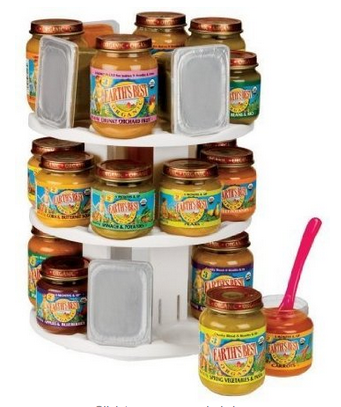 I also draw your attention to the fact that you need to look at the original date of the published articles, because some of the "best practices" may have changed. Always check with your child's pediatrician about complementary foods and their health.
I also draw your attention to the fact that you need to look at the original date of the published articles, because some of the "best practices" may have changed. Always check with your child's pediatrician about complementary foods and their health.
Disclaimer #3: Keep in mind that every family is unique, every situation is also completely unique. There are no universal solutions. Only you can find what works best for you. Certain goals require certain sacrifices and priorities - not everyone wants to make that choice, and that's GREAT! Just know what you want to achieve, and be ready to get to work, putting the best of your strength!
Disclaimer No. 4: The Encyclopedia Baby Food website uses photos from books on baby food with attribution, for a more complete understanding of the information (Article 1274, paragraph 1, part four of the Civil Code of the Russian Federation). Literature on baby food is found in the public domain on the Internet.



